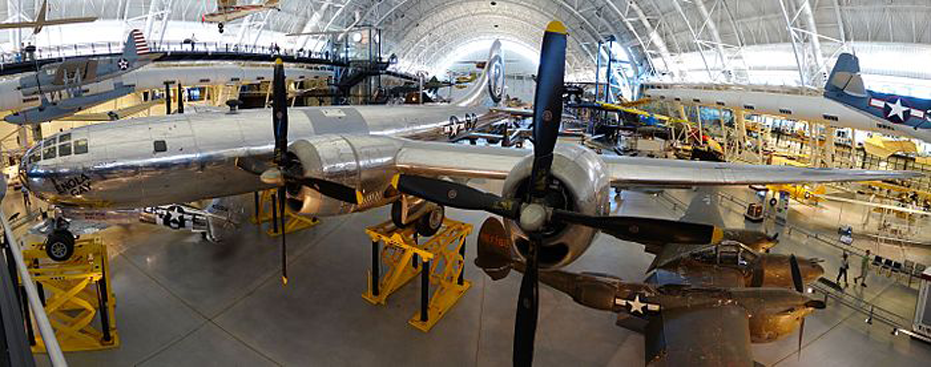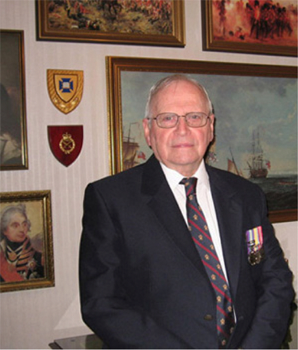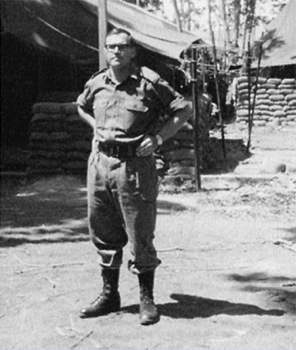


Was the Atomic Bombing of Japan in 1945 Justifiable?
Commentary by Australian Historian James Kenneth Bowen
It is becoming commonplace on Remembrance or Veterans' Day, 11th of November, for peace activists (and others with political or ideological agenda) to write to newspapers demanding that Americans, British and Australians also remember the civilian victims of alleged British and American "atrocities" in WW II. In the case of the British, reference is usually made to the bombing of German cities, and in particular, Dresden. Adolf Hitler's sustained terror bombing campaign against the civilian populations of London and other British cities appears to be conveniently ignored. In the case of Americans, reference is usually made to the atomic bombing of Japan in August 1945, and it is sometimes suggested that Japan was selected as a target for the atomic bomb only because the Japanese are Asian. In other words, it is suggested that Western racism was involved.
As the Pacific War Historical Society is concerned primarily with events of the Pacific War 1941-45, comments on this issue will be restricted to some of the considerations that actually exercised the minds of those who decided that the atomic bomb should be used against Japan.
Do young people need to be told why America used the atomic bomb on Japan?
Is it necessary to acquaint young people in Western countries with the true reasons behind the atomic bombing of Japan? I believe it is for at least two reasons. The atomic bombing of Japan in 1945 appears to be increasingly discussed in many schools as part of that vague subject called either "Social Studies"or "Study of Society and Environment". The real reasons for using the atomic bomb against Japan often appear to be ignored and this can lead to an unfair judgment being passed against the United States.
The second reason is the continuing refusal of successive governments in Japan to disclose to Japanese children the full extent of Japan's war guilt and the appalling atrocities committed by the Japanese military in China and during the Pacific War 1941-45. Allied with this denial, is an increasing push in Japan (a) to claim that Japanese troops invaded China as liberators of the Chinese from Western colonialism and (b) to blame the United States for "forcing" Japan to bomb Pearl Harbor as a desperate response to American embargoes on raw materials needed by Japan. Those who push this line conveniently ignore the fact that between five and ten million Chinese were slaughtered by invading Japanese troops between 1937 and 1945. They also ignore the fact that the United States imposed the embargoes on war-related raw materials in a vain attempt to halt brutal Japanese aggression in China and elsewhere in Asia. This bizarre revisionism appears to be increasingly reflected in letters to newspapers outside Japan.
It is refreshing to see that there are still people with sufficient knowledge of WW II history to challenge this revisionism in the letters columns of newspapers. The Pacific War Web-site also addresses these issues under the index heading "Imperial Japan's Path to World War II".
What President Truman said about America using the atomic bomb on Japan
In examining this topic, it is important to have regard to the considerations that led to President Truman's decision to use the atomic bomb on Japan. In a radio broadcast after the atomic bombs were dropped on Hiroshima and Nagasaki, President Truman said:
"I realize the tragic significance of the atomic bomb...having found the bomb, we have used it. We have used it against those who attacked us without warning at Pearl Harbor, against those who have starved and beaten and executed American prisoners of war, against those who have abandoned all pretense of obeying international laws of warfare. We have used it in order to shorten the agony of young Americans. We shall continue to use it until we completely destroy Japan's power to make war. Only a Japanese surrender will stop us."
I have added the emphasis to sections of the President's speech because I feel that they are very important in making out the arguments for using the atomic bomb.
The ferocity of Japan's military aggression and the appalling atrocities
Although the full extent of the appalling atrocities committed by the Japanese military was yet to be revealed, the President would have been aware of the savage manner in which the Japanese had waged war in the course of their military aggression. He would have been aware of the brutality, racism and fanaticism routinely displayed by the Japanese military; the cruelty towards, and frequent murder of prisoners of war and non-combatants; the raping and looting; the mass slaughter of Chinese civilians; and the willingness to fight to the last man and never surrender.
We saw evidence of that fanaticism, racism and psychopathic brutality in the murder of American pilots captured at Midway, the Bataan Death March and the Sandakan Death March, the mass slaughter of hundreds of thousands of Chinese civilians during the "Rape of Nanking" in 1937, the mass slaughter of hospital medical staff following the fall of Hong Kong, the mass slaughter of American wounded at a field hospital at Attu in the Aleutians, the mass slaughter of Australian nurses on Bangka Island, the mass slaughter of Australian prisoners of war on New Britain, Ambon and Timor, and the murder of Australian missionary sisters when the Japanese landed at Buna in New Guinea. The list of appalling atrocities goes on and on.
I feel that many of those who criticise the dropping of the atomic bombs on Hiroshima and Nagasaki have little understanding of the type of war that the Americans and Australians were fighting against the Japanese. Allied troops discovered very early in the Pacific War that the Japanese invariably fought to the last man, and even Japanese wounded were often supplied with two hand grenades. One was to kill any enemy soldier, including enemy medical staff, who approached them, and the other was to kill themselves rather than endure the shame of being captured alive.
These are the brutal and fanatical troops that Americans would have faced in an amphibious assault on the Japanese home islands in 1945!
Iwo Jima and Okinawa demonstrate the likely heavy cost in American lives of invading Japan
The American experience in capturing the Japanese islands of Iwo Jima and Okinawa also played an important part in the decision to use the atomic bomb, if necessary, rather than undertake the fearsome cost of an amphibious invasion of the four Japanese home islands.
After six weeks of fierce fighting, and fanatical resistance by the Japanese over every foot of ground, the island of Iwo Jima fell to the Americans. Its capture cost the US Marines 6,000 dead and more than three times that number wounded. This was the highest toll from one action in the history of the Corps. The US Navy lost 363 lives to Kamikaze and conventional aircraft strikes. Only 216 Japanese were captured alive out of the garrison of 20,000.
The American flag was raised over the Japanese island of Okinawa in the Ryukyu chain on June 22, 1945, after eighty-two days of fierce fighting during which the Japanese fanatically defended every foot of ground. The presence of a large civilian population on Okinawa, and the blending of Japanese troops with the Japanese civilian population, increased significantly the difficulties facing American troops. The fanatical defence of Okinawa cost the United States almost 40,000 battle casualties on land. That figure included 7,374 American dead. Approximately 110,000 Japanese troops died in the defence of Okinawa.
Conventional Bombing of Japan fails to persuade Japan to surrender
To undermine Japan's capacity to continue the war, it was necessary for America to strike at Japan's industrial base. In doing so, the Americans faced a problem. Unlike the situation in many Western countries, most of Japan's major cities did not have clearly defined industrial districts in 1945. Instead, Japanese industrial facilities were mostly dispersed in residential areas. As precision bombing did not exist in 1945, it was impossible for high altitude American B-29s to destroy factories that serviced Japan's war machine without also hitting residential neighbourhoods that adjoined these factories.
As the cost in American lives soared, and Japan showed no inclination to surrender, the Americans finally decided in early 1945 to strike at Japan's war industries even if it inevitably cost civilian lives. For ten days in March 1945, huge formations of B-29 bombers carried out saturation raids on five of Japan's largest industrial cities, including Tokyo. The raids were then suspended. Instead of inclining Japan to surrender, the Japanese government was able to use the air raids to whip up hatred of Americans and stiffen the will of the Japanese people to fight to the death as a nation. This was not as difficult in Japan as it would have been in Western countries. It has to be remembered that the Japanese people were products of a militaristic culture dating back hundreds of years. They felt intense pride in the power of their military, and Japan's military conquests in Asia and the Pacific. Japanese culture permitted Admiral Yamamoto to be viewed as a national hero after he engineered the treacherous sneak attack on the United States Pacific Fleet at Pearl Harbor.
The Japanese government plans a fanatical defence of Japan's home islands to the last man, woman and child
In April 1945, the Japanese Suzuki government had prepared a war policy called Ketsugo which was a refinement of the Shosango victory plan for the defence of the home islands to the last man. These plans would prepare the Japanese people psychologically to die as a nation in defence of their homeland. Even children, including girls, would be trained to use makeshift lethal weapons, and exhorted to sacrifice themselves by killing an American invader. To implement this policy of training children to kill, soldiers attended Japanese schools and trained even small children in the use of weapons such as bamboo spears.
The American government was aware from intelligence intercepts of the chilling implications of these Japanese defensive plans. Intelligence reports indicated that the Japanese would probably be able to muster two million troops and eight thousand aircraft for the defence of the four home islands against a traditional amphibious invasion. The dispersal of these military resources across Japan, and their careful concealment, would provide the Americans with no opportunity to destroy them from the air. The Ketsugo policy placed heavy reliance on suicide attacks on the American troops and their covering warships. For this purpose, several thousand aircraft would be adapted for suicide attacks. Other methods of suicide attack being developed included dynamite-filled "crash boats", guided human torpedoes, guided human rocket bombs (similar to the "Baka" rocket plane used against American ships at Okinawa), and specially trained ground suicide units carrying explosives. In addition, the invading Americans would have to face a civilian population drilled in guerilla tactics.
The Americans had every reason to be deeply disturbed when they learned about Japanese plans to defend the home islands by massive suicide attacks on American amphibious forces. The Kamikaze suicide attacks on Allied ships at Okinawa had alone produced a horrifying toll:
- 34 Allied warships sunk ;
- 368 Allied ships damaged (some fit only for scrap);
- 4,900 Allied sailors killed; and
- 4,874 Allied sailors wounded.
President Truman's military advisers warn him of the very high cost of an invasion of Japan
Faced with this knowledge of Japan's extraordinary plan to defend its home islands to the death, and the fanatical character of Japanese soldiers, and extrapolating the fanatical defence of Iwo Jima and Okinawa to an amphibious assault on Japan's four home islands, American military leaders were deeply concerned. They advised President Truman that an attempt to invade and subdue the Japanese on their home islands was likely to cost at least 1,000,000 American battle casualties.
The Potsdam Declaration gives Japan a last opportunity to surrender
On July 26, 1945, the Allies issued the Potsdam Declaration. Its purpose was to hasten Japan's surrender without the need for a difficult and very costly amphibious assault. It warned Japan that it faced "prompt and utter destruction" unless the Japanese swiftly agreed to an unconditional surrender. On July 28, Prime Minister Suzuki announced that Japan intended to "ignore" the Potsdam Declaration.
We have learned that underlying Suzuki's rejection of the Potsdam Declaration was Emperor Hirohito's stubborn resolve to continue the war until he received a guarantee from the Allies that his status as emperor would be preserved and that he would not be tried as a war criminal. There is no evidence that Hirohito felt any genuine concern for the suffering of Japanese civilians as the war encroached on their lives. See Professor Herbert Bix: "Hirohito and the Making of Modern Japan" (2000), published by Harper Collins, and especially, the chapter "Delayed Surrender".
When the Japanese refuse to surrender, President Truman elects to use the atomic bomb
By July 1945, Japan's military and industrial resources had either been destroyed or dispersed widely and largely concealed from air attack. The Americans were finding it very difficult to locate sizeable military or industrial targets for their B-29 bombers to attack with conventional bombs.
When informed that Japan intended to ignore the Potsdam Declaration, President Truman was faced with a dilemma. There was little scope for further conventional bombing. He was left with the choice of ordering an invasion of Japan's home islands or using the atomic bomb. Rather than risk the predicted 1,000,000 American battle casualties in an amphibious assault on Japan, President Truman elected to use the atomic bomb.
The first target was Hiroshima, a city on Japan's Inland Sea. At this time it was the headquarters of the 2nd General Army. On 4 August 1945, American aircraft dropped leaflets on Hiroshima warning the citizens to expect terrible destruction to be visited upon their city because Japan had refused to surrender. Although many civilians had already been evacuated to the country, this warning was largely ignored. On August 6, the first atomic bomb was dropped on this city. At Hiroshima, 60,000 Japanese died and a similar number were injured.
The emotive impact of the use of an atomic bomb on a Japanese city, and its usefulness as a stick with which to beat the United States, has caused many people to ignore the fact that more people died in the conventional bomb attack on Tokyo on the night of 8/9 March 1945. At Tokyo, on this one night, the bombs and resulting firestorm killed 80,000 people and injured 44,000.
Three days later, when the first atomic bomb had still evoked no response from Japan, a second bomb was dropped on Nagasaki, a port with naval installations. The primary target on this day had been the city of Kokura where a huge army arsenal was located. Thick clouds over Kokura forced diversion of the B-29 with the second bomb to Nagasaki. At Nagasaki, 36,000 were killed and about 60,000 wounded.
Although these casualties from the two atomic bombs are disturbing, they almost certainly represent a very tiny fraction of the Japanese who would have died if the whole population of Japan, civilian as well as military, adults and children, had been mobilised by the Suzuki government to die as a nation in defence of Japan.
The atomic bombs were dropped on two cities of military significance (a) because the Emperor of Japan and his government refused to surrender and were preparing the Japanese people for a fight to the death as a nation, (b) because there were no readily discernible large military or industrial targets available for conventional air attack, and (c) because the Allies faced the prospect of incurring horrendous battle casualties from a conventional amphibious invasion of Japan.
Professor Bix states that the dropping of the atomic bombs, and the simultaneous entry of the Soviet Union into the war against Japan, were described as "gifts from the gods" by Navy Minister Mitsumasa Yonai (page 509). By mid-1945, Hirohito and his chief political adviser Koichi Kido were becoming increasingly concerned at growing alienation of public support for continuation of the war. District governors and police chiefs were reporting that the Japanese people were war-weary and despondent, and that popular hostility to the emperor and his government was increasing rapidly. Faced with these serious domestic pressures, Hirohito and his councillors welcomed the dropping of the atomic bombs and the Soviet entry into the war as a convenient excuse to accept the terms of the Potsdam Declaration and, at the same time, to provide the emperor with the credit for ending the war (page 523).
The historical matters detailed above are not intended to put an end to argument about the dropping of the atomic bombs on Japan, but to put on record some of the more important considerations that persuaded President Truman to use the atomic bombs.
Source: James Bowen, pacificwar.org.au, Was the Atomic Bombing of Japan in 1945 Justifiable? with permission of the author.



